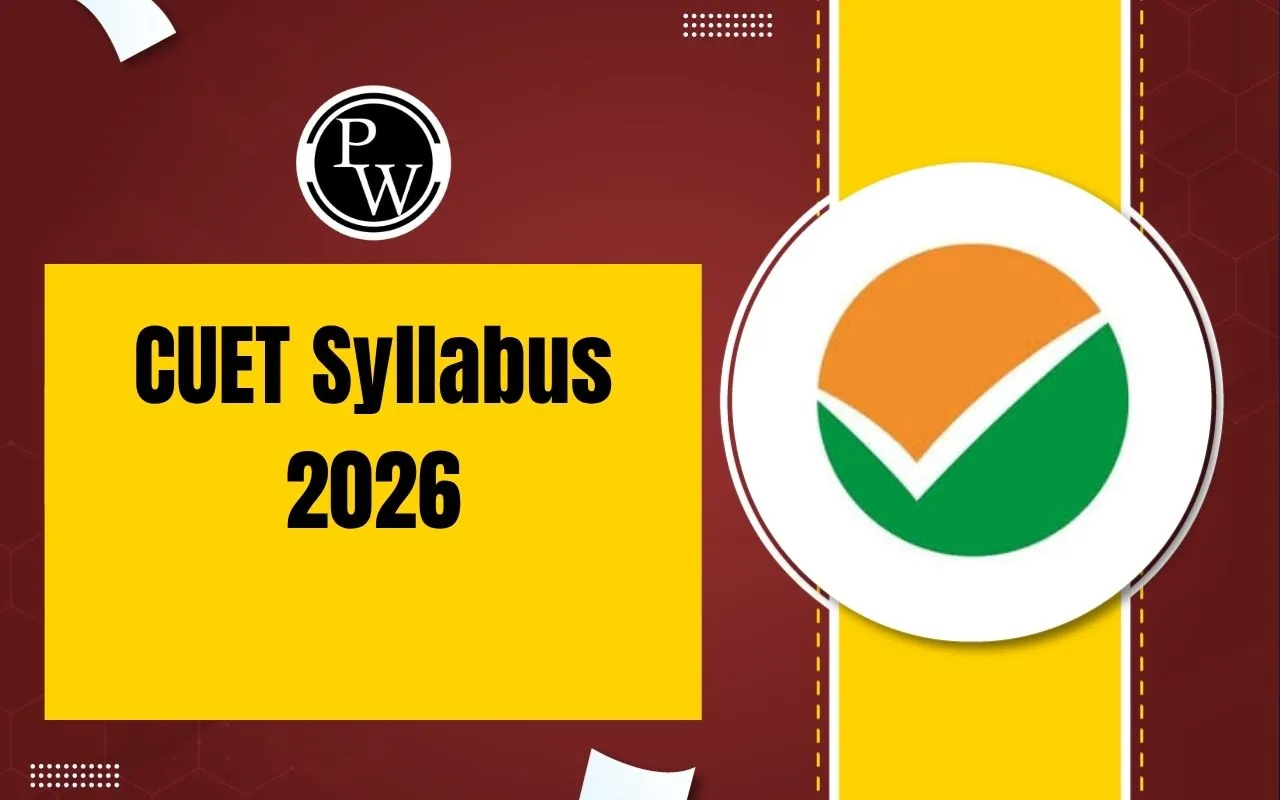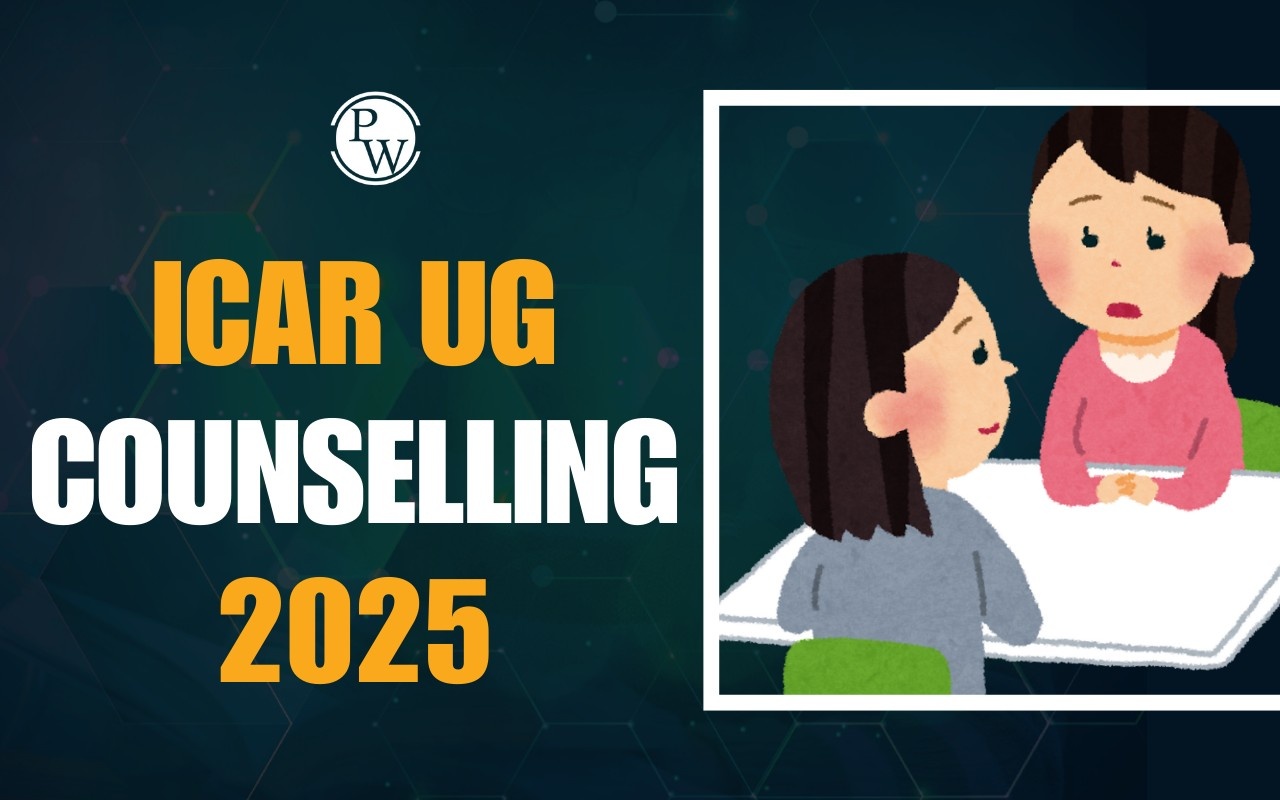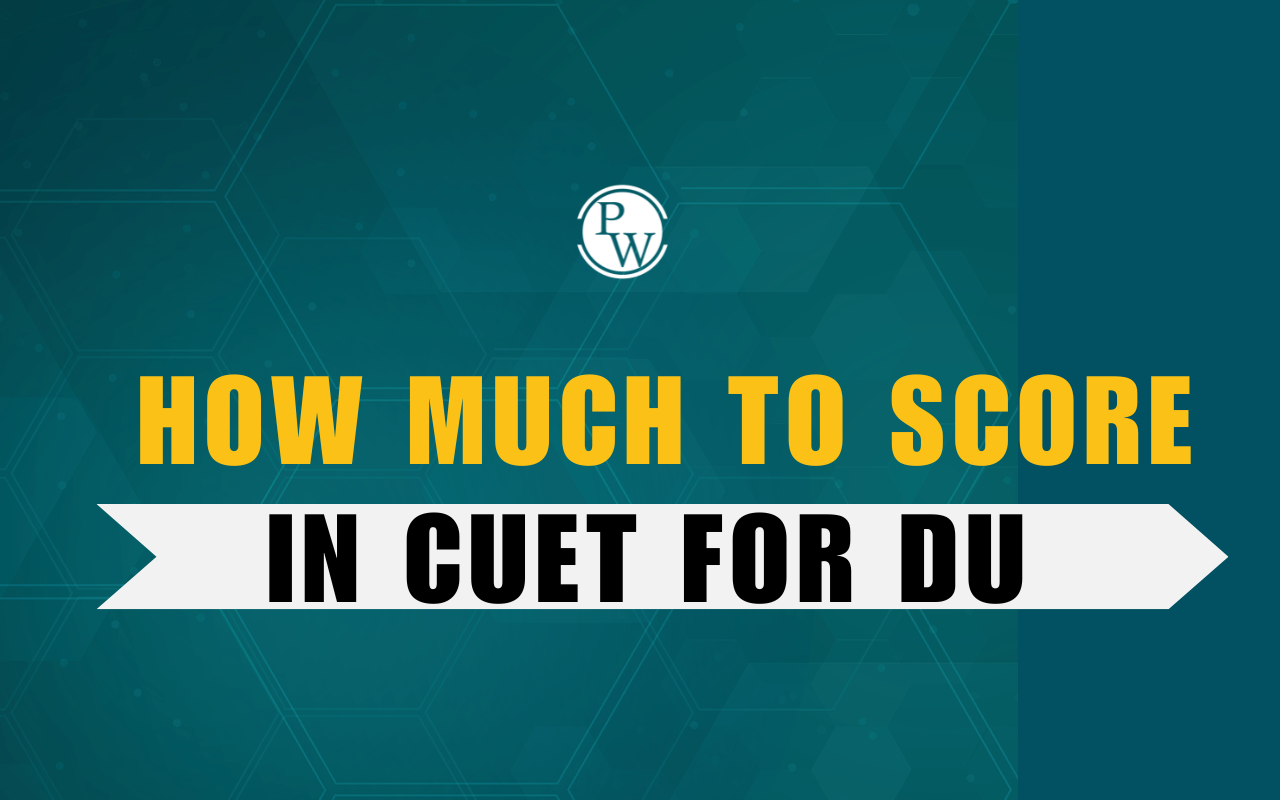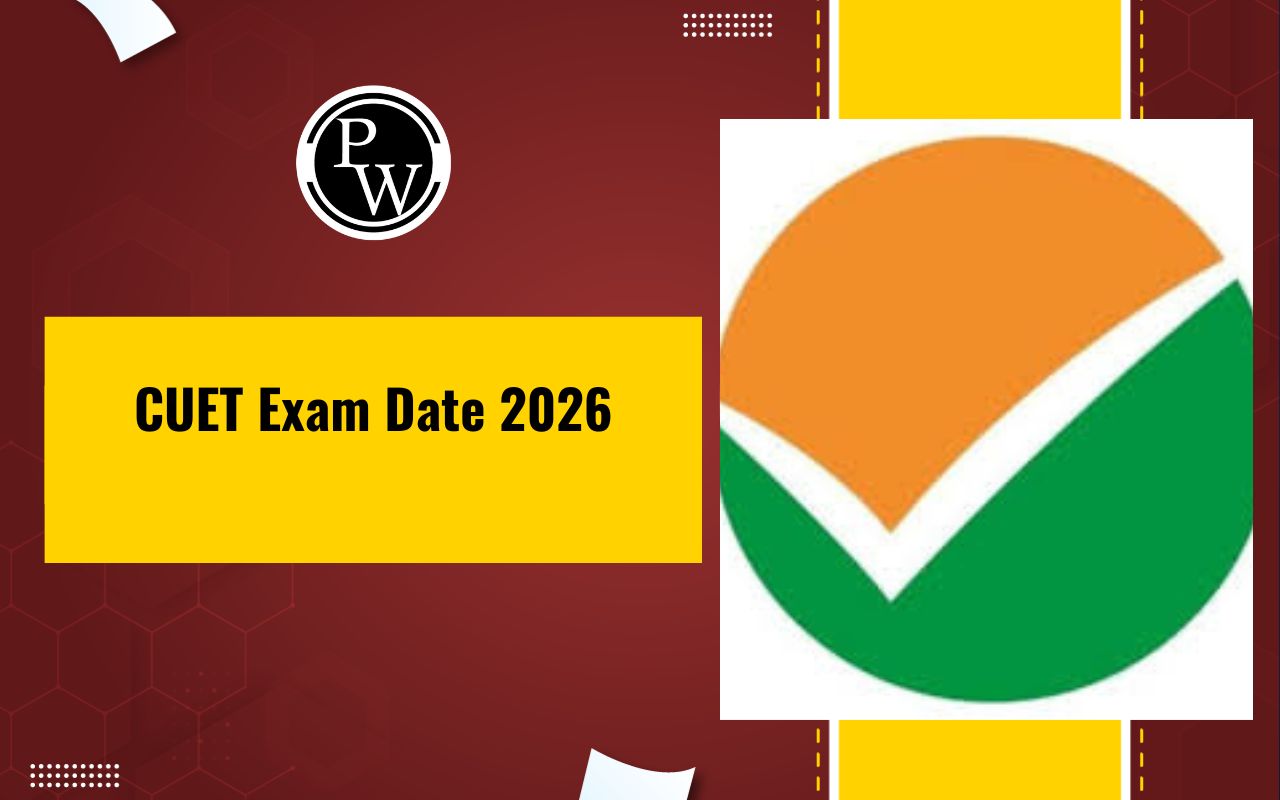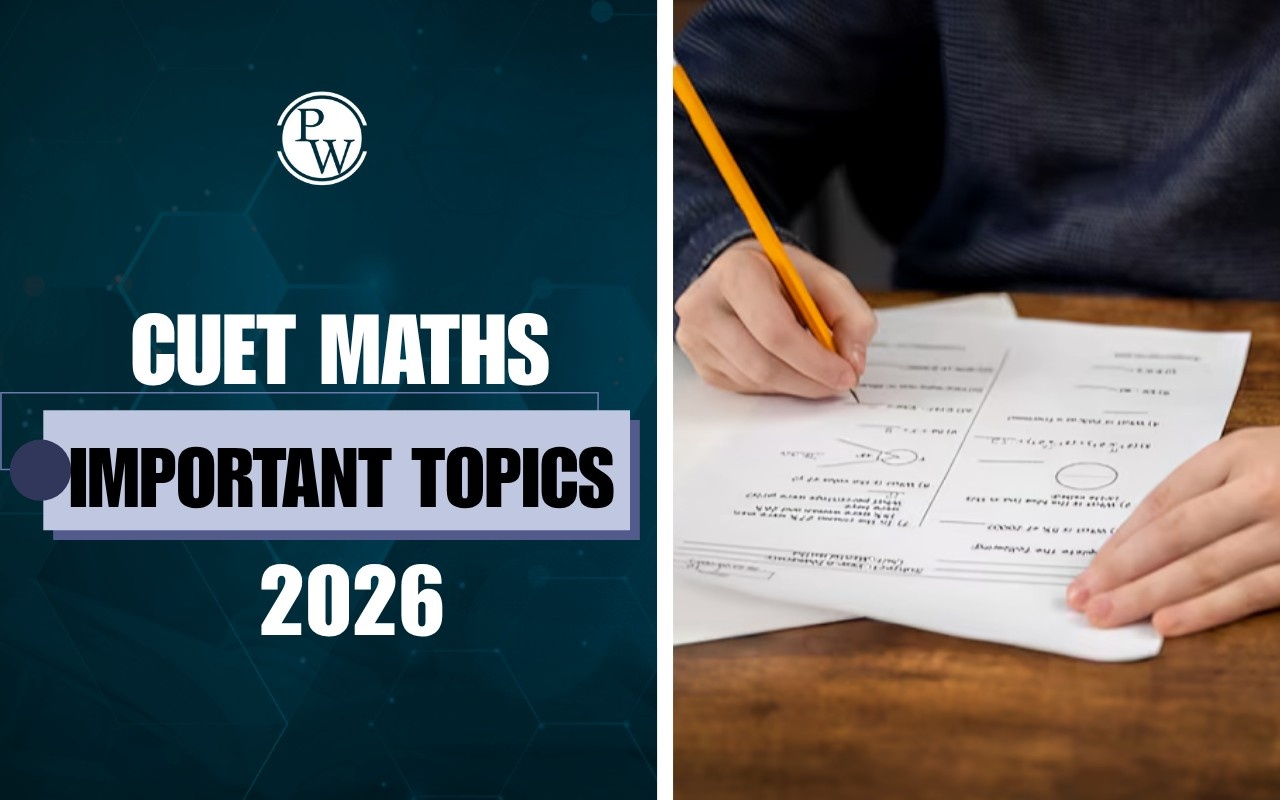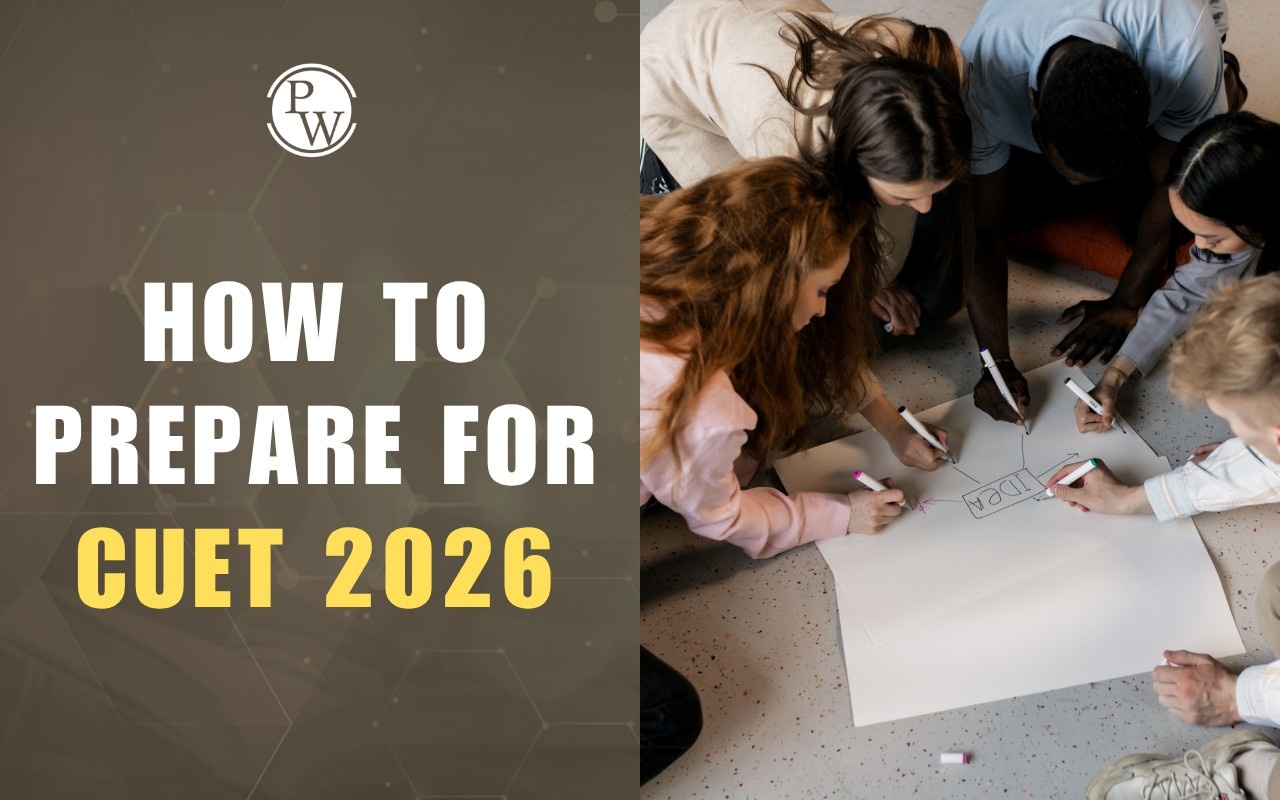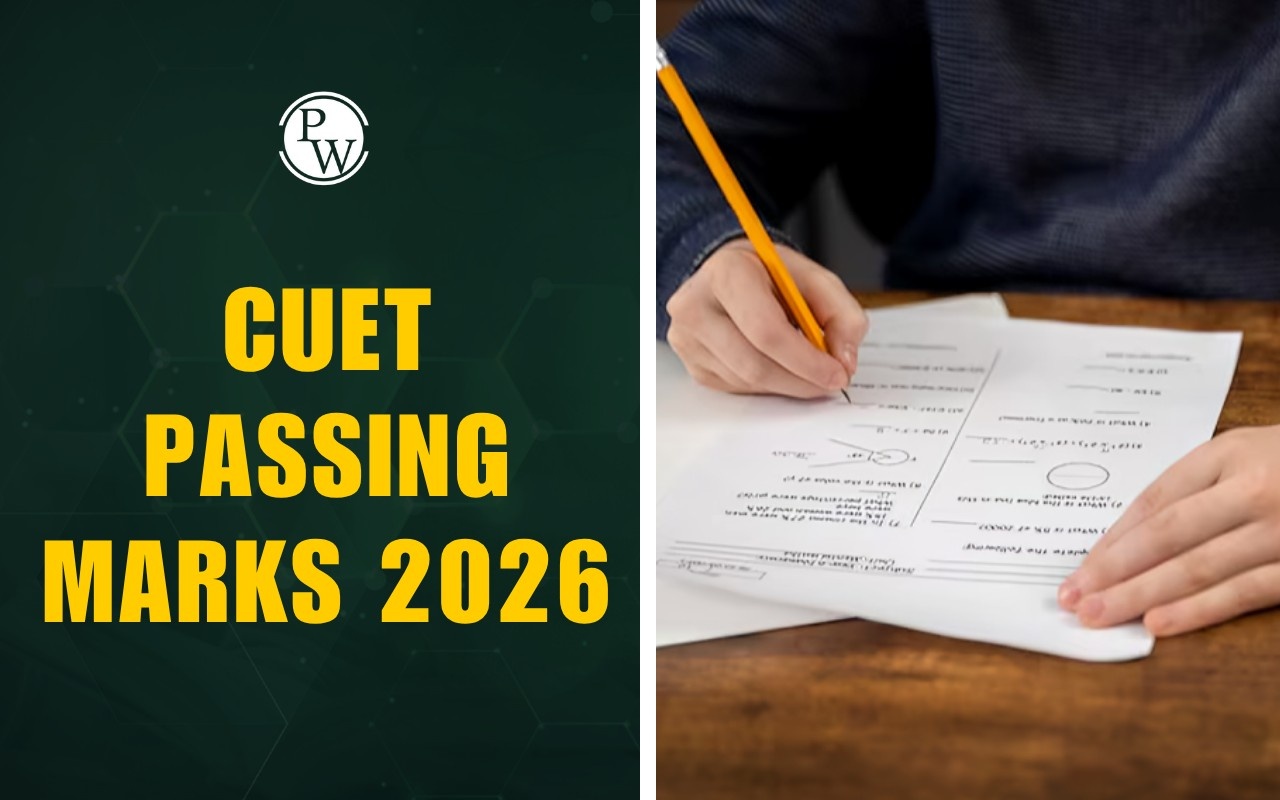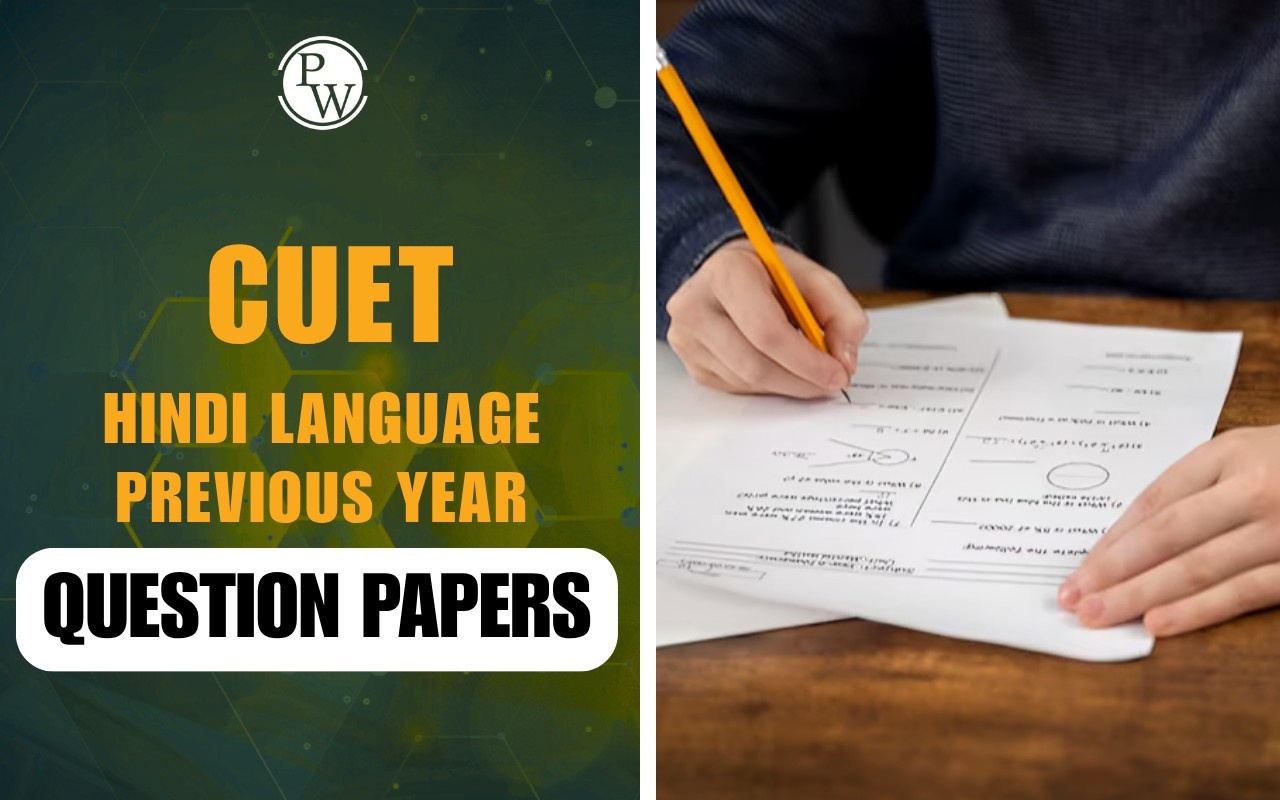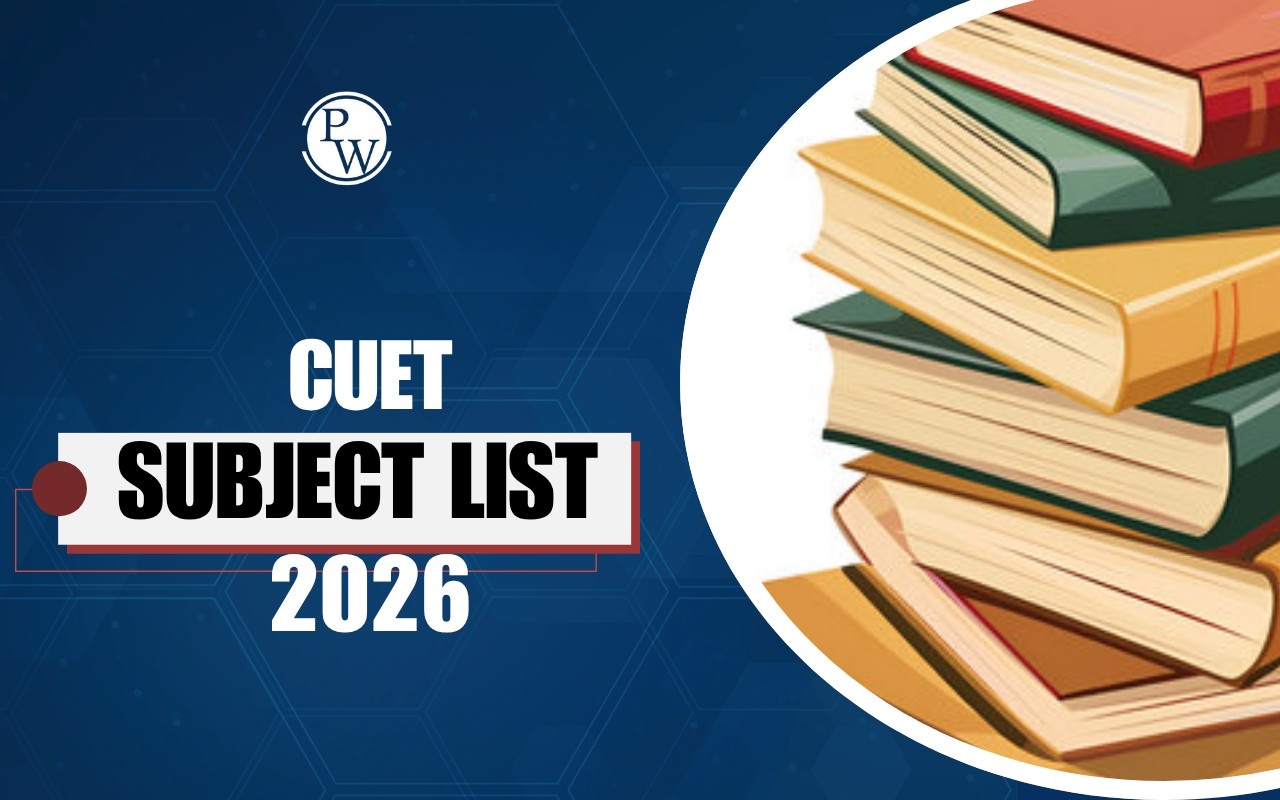

Allahabad University Syllabus 2025 : Allahabad University is going to release Allahabad University Syllabus 2025 at their official website at allduiv.ac.in. Candidates can download the subject-wise syllabus PDFs from here. Candidates will get knowledge about Foundational concepts, sophisticated theories, research methodologies, and applied techniques.
Also Check : CUET 2025 Registration
Students enrolled in these UG/PG courses at the university must ensure that they review the revised Allahabad University syllabus 2025 BA, BSc, BCom, BBA, BCA, MSc, MA, MCom, MCA, MBA, etc to prepare for the upcoming CUET 2025 exam adequately.Allahabad University Syllabus 2025 Overview
The Allahabad University syllabus 2025 varies depending on the course of study. However, it generally offers UG, PG, and doctoral programs in various fields, such as commerce, arts, law, science, and management. Allahabad University syllabus 2025 aims to provide students with a comprehensive understanding of the subject, focusing on theoretical and practical knowledge.| Allahabad University Syllabus 2025 Overview | |
| Name of the University | Allahabad University |
| Course Name | UG, PG, Ph.D. & M.Phil. Courses |
| Location | Allahabad, Uttar Pradesh |
| Category | Syllabus |
| Status of Syllabus | Available Now |
| Official Website | https://www.allduniv.ac.in/ |
How To Download Allahabad University Syllabus 2025 PDF?
To download the Allahabad University Syllabus 2025 PDF, follow these important steps:- Visit the official site of Allahabad University at www.allduniv.ac.in.
- On the home page, click the "Allahabad University Syllabus" tab.
- You will be directed to the next page displaying various UG/PG syllabuses of Allahabad University.
- From the options available, select the appropriate link to access the desired syllabus.
- The Allahabad University Distance Education Syllabus will then be displayed on your screen.
- To enhance your exam preparation, download the syllabus in PDF format.
Allahabad University Syllabus 2025 PDF Download Link
We have uploaded the Allahabad University Syllabus 2025 PDF in the table below, aiming to assist the candidates in acquiring a comprehensive understanding of the curriculum.| Subject | PDF Link |
| Commerce | Google Drive Link |
| MBA | Google Drive Link |
| Ancient History | Google Drive Link |
| Arabic and Persian | Google Drive Link |
| CBCS | Google Drive Link |
| Economics | Google Drive Link |
| Geography | Google Drive Link |
| Music | Google Drive Link |
| Philosophy | Google Drive Link |
| Political Science | Google Drive Link |
| Sociology | Google Drive Link |
| Urdu | Google Drive Link |
| Visual Arts | Google Drive Link |
| Centre for Development Studies | Google Drive Link |
| Department of Physical Education | Google Drive Link |
| Sanskrit | Google Drive Link |
| Psychology (MA/MSc) | Google Drive Link |
| Psychology (BA/BSc) | Google Drive Link |
| Biochemistry | Google Drive Link |
| Biotechnology | Google Drive Link |
| Electronics and Communications | Google Drive Link |
| Home Science | Google Drive Link |
| K Banerjee Centre | Google Drive Link |
| Material Science | Google Drive Link |
| Mathematics | Google Drive Link |
| Physics | Google Drive Link |
| M.Sc. Agriculture Botany | Google Drive Link |
| Defence and Strategic Studies | Google Drive Link |
Allahabad University Syllabus 2025 for MA in Education
Candidates can check Allahabad University MA in Education Syllabus 2025 in the table below. Allahabad University Syllabus 2025 for MA in Education includes topics such as Problems of Indian Education, Principles of Education, Educational Philosophy & Sociology, etc.| Subjects | Topics |
| Problems of Indian Education | Primary education, secondary education, higher education, adult education; National Policy on Education; Language Controversy |
| Educational Psychology | Nature, scope and methods and educational psychology; Growthand development; Individual difference; Intelligence;’ Creativity; Personality; Learning;transfer of learning; Motivation; Group dynamicsMeasurement, evaluation and action research in Education, Measure of Central Tendency And Standard Deviation |
| Environmental education | Educational technology; Distance education; Value education;Peace education; Human rights education; Population education |
| Principles of Education | Meaning and scope of education; Aims of education; Approaches to education; Agencies of education; Curriculum; Educational Planning |
| Educational Philosophy & Sociology | Nature, scope and need of philosophy of education;Naturalism, Idealism, Pragmatism, Realism, Existentialism; Educational Sociology; Cultureand education; Social Satisfaction; Social Mobility’ Social Changes; Futurology |
| Indian and Western Education | Sir Syed Ahmed Khan, Madan Mohan Malviya, Tagore,Vivekanand, Mahatma Gandhi, Radhakrishnan, Plato, Rousseau, Dewey, Russel. |
Allahabad University Syllabus 2025 for MA in Ancient History
Candidates can check Allahabad University MA in Ancient History Syllabus 2025 in the table below. Allahabad University Syllabus 2025 for MA in Ancient History includes topics such as Early Cultures and Civilizations of India, Chalcolithic Cultures, Outline of Ancient World Civilizations, etc.| Subject | Topic |
| Early Cultures and Civilizations of India | Definition of Archaeology and relation with other disciplines, Palaeolithic Cultures : Salient features,1Geographical distribution, Belan Valley, Son Valley; Mesolithic Cultures: Salient features,Geographical distribution - Vindhyas, Ganga Plains; Neolithic Cultures: Salient features,Geographical distribution-South India, Vindhyas and Ganga Plains; Harappan Civilization :Origin and extent, salient features, chronology and decline |
| Chalcolithic Cultures | Central India and Deccan: Kayatha Culture, Ahar Culture, Jorwe CultureCopper-Hoards and Ochre Colour Pottery (OCP)Iron Age : Antiquity of Iron ; PGW and NBPW Cultures; Sites: Atranjikhera, Hastinapur, Kausambi,Taxila, Arikamedu |
| History of India upto the Kushanas (C. 600 B.C.-C.319 A.D.) | Literary Indian and Foreign sources Epigraphic Numismatic Archaeological sources EarlyState FormationThe Mahajanapadas: Rise of Magadha from Bimbisara to Mahapadma Nanda, Persian Invasion,Alexander’s Invasion, bases and features of monarchical states; Nature of RepublicsMauiyan Empire and its Decline, Magadhan Expansion in the time of Chandragupta Maurya -administration, society and economy in the Mauryan Period; Asoka and his Dhamma; Declineof the Mauryan Empire.Political Fragmentation C. 200 BC - AD 300 Early History of Sungas and Satavahanas Achievements ofPushyamitra Sunga and Gautamiputra Satkami Saka-Satavahana Struggle, Decline of SatavahanadynastyForeign Invasions and Dynasties: Indo-Greeks, Sakas, Pahlavas, and Kusanas : Kaniska -I : date andachievements |
| Outline of Ancient World Civilizations | Earliest Civilizations-I Egyptian Civilization: Political development under the Pharaohs; EgyptianReligion, Art and Intellectual AchievementsEarliest Civilizations-II:Mesopotamian Civilizations: Salient features Sumerian Civilization Babylonian CivilizationEarliest Civilizations-II:Mesopotamian Civilizations: Salient features Sumerian Civilization Babylonian CivilizationAssyrian Civilization Chaldean CivilizationGreek Civilization Homeric AgePericlean Age : Contribution of PericlesSalient features of Hellenic and Hellenistic Civilizations Roman CivilizationJulius Caesar and Augustus - Their contributions Roman Culture : Law, Art, Literature,Religion and Science; Roman LegacyDevelopment of Christianity under Roman Empire.Ancient Palestine, Iran and China:Achaemenid Empire; Zarathustra and his reformsParthian Civilization, Sassanian CivilizationChou and Chin Periods: Cultural Achievements Confucius & Lao-Tzu History of Ancient India (C 319AD to 1200 AD) Gupta DynastyGupta Rulers their achievements: Chandragupta-I, Samudragupta, Chandragupta-II, Kumargupta I, Skandagupta and the Huna invasion , Decline of the Guptas, Vakataka-Gupta Relation, Hunainvasion, Maukharis, Later GuptasHarsha Career and achievements, relation with contemporary rulers, (Harsha’s relationship withPulakesin -II), visit of Hiuen TsangGurjara-Pratihar, Pala, Rastrakuta; Political History of Gurjara Pratihar, Pala and Rastrakuta,Tripartite struggle, Cultural AchievementsPallava Dynasty; Political and Cultural Achievements of Pallavas Chalukya Dynasty; Political andCultural Achievements of Chalukyas of Vatapi, Vengi and' Kalyani Chola Dynasty PoliticalHistory, Administration, relations with contemporary powers, Cultural achievements. |
| Indian Culture | Foundation of Indian Culture; Sources of Study; Definition and Characteristics; HarappanCivilization; Vedic Culture;Main Features of Ancient Indian Society; Varnasrama System; Ancient Indian Education System,Taxila, Nalanda and Vikramashila; Position of Women; Guilds and their roles, Ancient IndianReligions; Shaivism; Vaishnavism; Jainism; Buddhism;Socio-Spiritual Streams; Sankaracharya; Bhakti Movement; Interaction between Islam and IndianSociety with special reference to impact on Indian society Social and Religious Movements inNineteenth Century India. |
| Concepts and Currents in History | Nature and characteristics of history, objectivity and subjectivity in history, causation in history,History is science or art.Introduction to approaches of history - Oriental, (Colonial), Nationalist, MarxistPhilosophy of history with special reference to Hegel, Ranke, Karl Marx, Spengler, ToyanbeeNationalism : Germany, Italy, India, Imperialism and colonialism : World War-II andRevolutions - Russian and Chinese. |
| Ancient Indian Art and Architecture | Beginnings of Indian Art; Characteristic Features of Ancient Indian Art; Prehistoric Art; HarappanArt & ArchitectureMauryan, Sunga and Kusana Art; Asokan Pillars, Capital Figures, Folk Art; Stupa: Bharhut, Sanchi,Amravati; Rock-cut Cave Architecture (Chaitya/Vihara)-Karle, Bhaja; Kusana Art: Evolutionof Buddha Images Mathura Style Gandhara Style;Gupta Art: Essential features; Beginning of temple Architecture-Bhitargaon temple; Deogarhtemple; Ancient Indian Paintings with special reference to Ajanta Temple architectural styles:Nagara, Dravid, BesaraArt & Architecture under; Chalukyas: Aihole, Pattadakal; Chandela: Khajuraho temples; OrissanTemples: Lingaraja and KonarkArt & Architecture under; Rashtrakutas: Kailash Temple of Elora; Pallavas: Rathas ofMahabalipuram; Cholas: Brihadishwara Temple of Tanjavur. |
Also Check : CUET Physics Syllabus 2025
Allahabad University Syllabus 2025 for MA in Political Science
Candidates can check Allahabad University MA in Political Science Syllabus 2025 in the table below. Allahabad University Syllabus 2025 for MA in Political Science includes topics such as INDIAN GOVERNMENT AND POLITICS, INTERNATIONAL RELATIONS, WESTERN POLITICAL THOUGHT, etc.| Subjects | Topics |
| INDIAN GOVERNMENT AND POLITICS | The constituent assembly, Preamble, Main features of Indian Constitution, Procedure to amend the Constitution, Federalism, Fundamental Rights, Directive Principles of State Policy,Fundamental DutiesPresident, Prime Minister and Council of Ministers, Parliament, Judiciary, Judicial, Review andActivism, Governor, Chief Minister, Council of Ministers, State Legislature, Panchayati Rajand Urban Local Bodies, Party System in India |
| COMPARATIVE GOVERNMENT AND POLITICS | Meaning, approaches, nature and scope of comparative government and politics.Constitutionalism, Rule of Law, Legislature Executive and Judiciary, Organization ofGovernment- Unitary, Federal, Parliamentary and Presidential Democracy, DemocracyDictatorship, Local Self Government, Political Culture and Socialization, Political Parties,Pressure Groups, Electoral Process, Public opinion and Bureaucracy. |
| INTERNATIONAL RELATIONS | The study of International Relations, Role of State and Non-State Actors, Cold War, Feature of present world order, Globalisation and impact on world politics, Problem of Third WorldSecurity, NAM, North-South Dialogues, ASEAN and SAARC, International Terrorism, NuclearProliferation, Disarmament and Arms Control, Collective Security, Indian Foreign Policy, Indo-US Relations. |
| POLITICAL THEORY | Definition, Nature and Scope of Pol. Science, Nomenclature relation with other social sciences, Different approaches idealistic, Individualistic, Liberal, Social Welfare, Contemporary, Libertarian Concept, Gandhian Concept and Marxian view of state, Sovereignty, Nation and Nationalism , Challenges before nation-state, Globalisation and emergence of civil society, Concept of liberty, equality, law, rights, justice, punishment and citizenship, evolutionary socialism, Marxism, Fascism, Democracy and Communitarianism |
| WESTERN POLITICAL THOUGHT | Features of Ancient Greek Political Thought, Plato, Aristotle, Aquinas, Machiavelli, Bodin, Hobbes, Locke and Rousseau, Bentham, Mill, Green, Hegel, Marx, Lenin, Mao |
| INDIAN POLITICAL THINKERS | Features of Ancient Indian Political Thought, Political Ideas of Manu, Kautilya, Features of Jain andBudhist Political Thought, Political Ideas of Mahabharat, Indian Renaissance and Political Ideas of Raja Ram Mohan Roy, Dayanand and Vivekanand, Political Ideas of Tilak, Arvindo Ghosh, M.N. Roy and Jai Prakash, Jawahar Lal Nehru, Mahatma Gandhi and B.R. Ambedkar. |
| INDIAN ADMINISTRATION | Meaning, scope and significance of Public Administration, NPA and NPM Organisation, Ecology of Indian Administration, Structure of organisation (Central and Cabinet Secretariats, P.M.O.), Centre-State Relations, Public sector undertakings, Parliamentary Control over financial Administration, Growth of civil services in India, D.M. and O&M, 73 – 74 Constitutional Amendment Acts, welfare administration for- S.C., S.T. and Women, Generalist- Specialist, Controversy, Problem of corruption, Lokpal and Lok Ayukta, Minister-Civil Servant relationship |
Also Check : CUET Geography Syllabus 2025
Allahabad University Syllabus 2025 for MA in English Literature
Candidates can check Allahabad University MA in English Literature Syllabus 2025 in the table below. Allahabad University Syllabus 2025 for MA in English Literature includes topics on poetry, prose and fiction.| Poetry |
| William Shakespeare :(a) Sonnet 29: “When in disgrace with fortune and men’s eyes” (b) Sonnet 138 “When my love swears that she is made of truth” John Done: “Canonization” John Milton: Paradise Lost (Satan’s Speech ) John Dryden: Absalom and Achitophel, Lines 150-197. (False Achitophel). Alexander Pope: “Essay on Man” (Lines 1-18) William Blake: The Nurse’s Song William Wordsworth: (a) “Tintern Abbey”, (b) “The World is too much with us” Percy B. Shelley: (a) “Ode to the West Wind” (b) “ A Lament” John Keats: (a) “Ode to a Nightingale”, (b) “ La Belle dame sans merci” Sarojini Naidu: The Flute Player of Brindaban Toru Dutt:” Baughmaree” 12. Rabindra Nath Tagore: From Gitanjali : (a) 11th, Leave the Chanting, (b) 12th Fruit Gathering. 13. Nissim Ezikiel: “Background”, “Casually” 14. Frost: “ Stopping by the Woods” 15. Walt Whitman: “O Captain, My Captain!” 16. Alfred Lord Tennyson: (a) “Break, Break, Break” ; (b) “ Ulysses” 17. Robert Browning: (a) “ My Last Duchess” ; (b) “Prospice” 18. Matthew Arnold: (a) “Dover Beach”; (b) “ Memorial Verses” 19. Thomas Hardy: (a) “ The Darkling Thrush”; (b) “ The Voice” 20. Gerard Manley Hopkins: (a) “Pied Beauty” (b) “Thou Art Indeed Just Lord . . ” 21. W. B. Yeats: (a) “The Second Coming” ; (b) “ Prayer for My Daughter” 22. T. S. Eliot: “Love Song of Alfred J. Prufrock” 23. W. H. Auden: “In Memory of W. B. Yeats” 24. Adil Jussawala: “Sea Breeze, Bombay” 25. Kamla Das: “An Introduction” 26. Keki N. Daruwalla: “Ghagra in Spate” 27. Derek Walcott (West Indian): “A Far Cry From Africa” 28. Wole Soyinka (Nigerian): “Dragonfly at My Window Pane” 29. Amiri Baraka (African-American): “Wise I” 30. Judith Wright (Australian): “Bora Ring” 31. A. D. Hope (Australia): “Australia” 32. Michael Ondaatje (Sri Lanka/Canada): “Letters and Other Worlds” 33. Eunice de Souza (India): “Autobiographical” 34. Agha Shahid Ali (India): “Postcard from Kashmir” and “A Lost Memory of Delhi” 35. A. K. Ramanujan (India) “Love Poem for a Wife I” 36. Arun Kolatkar (India) “The Priest’s Son” and “The Butterfly” 37. Sylvia Plath (America): “Mirror” and “Daddy” 38. Gwendolyn Brooks (America): “The Lovers of the Poor” 39. Emily Dickinson (America): “After Great Pain, A Former Feeling Comes” 40. Sherman Alexie (America): “On the Amtrak from Boston to New York City” 41. Lorna Dee Cervantes (America): “Refugee Ship” 42. Practical Criticism : There will be multiple choice questions (MCQs) based on unseen passages of prose and B. A. Part III: English Literature 43. Drama : George Bernard Shaw: Arms and the Man. Mahesh Dattani: Where There’s a Will The following plays are prescribed: William Shakespeare: Macbeth William Shakespeare: The Merchant of Venice T. S. Eliot: Murder in the Cathedral Eugene O’Neill: Desire Under the Elms Harold Pinter: The Birthday Party Girish Karnad: Hayavadana |
| Prose and Fiction |
| An Anthology of English Prose edited by the Dept. of English & MEL, University of Allahabad, Macmillan |
| E. V. Lucas: “Tight Corners” A. G. Gardiner: “In Defence of Ignorance” Robert Lynd: “Student” G. K. Chesterton: “On the Pleasure of No Longer Being Very Young” George Orwell: “Reflections on Gandhi” Aldous Huxley: “Pleasures” J. B. Priestley: “On Doing Nothing” Bertrand Russell: “The Road to Happiness” Richard Wright: “Twelve Million Black Voices” A. C. Benison: “The Art of the Essayist” Francis Bacon: “Of Studies” Proverbs, Chapter XV. (From The Bible) Addison “Will Wimble” Steele “The Spectator Club” Goldsmith: “Beau Tibbs” Johnson, “Letter to Chesterfield” Lamb, “Dream Children” Charlotte Perkins Gilman, “The Yellow Wallpaper” Anita Desai: “A Farewell Party” James Thurber “The Secret Life of Walter Mitty Katherine Mansfield “The Fly” Jane Austen: Pride and Prejudice Charles Dickens: David Copperfield E. M. Forster: A Passage to India Salman Rushdie: Haroun and the Sea of Stories |
Allahabad University Syllabus 2025 for MA in Hindi
Candidates can check Allahabad University MA in Hindi Syllabus 2025 in the table below. Allahabad University Syllabus 2025 for MA in Hindi includes topics such as Hindi Sahitya ka Itihas, Bhartiya Kavyashastra, Kavyabhasha, etc.| Hindi Sahitya ka Itihas, Bhasha Vigyan, Bhartiya Kavyashastra, Pashchatya Kavyashastra, Kavyabhasha, Aalochana aur Sahitya Chintan ki Nai Dishayen. |
Allahabad University Syllabus 2025 for MA in Mediaeval and Modern History
Candidates can check Allahabad University MA in Mediaeval and Modern History Syllabus 2025 in the table below. Allahabad University Syllabus 2025 for MA in Mediaeval and Modern History includes topics such as the History of The Modern World (1453-1945), History of The Modern India (1740-1950), etc.| History of The Modern World (1453-1945) : A Survey of the Political, Social Economic and Cultural History of the Modern World |
| History of Mediaeval India (1206-1740) |
| History of The Modern India (1740-1950) |
Allahabad University Syllabus 2025 for MA in Painting
Candidates can check Allahabad University MA in Mediaeval and Modern History Syllabus 2025 in the table below. Allahabad University Syllabus 2025 for MA in Mediaeval and Modern History includes topics such as the History of The Modern World (1453-1945), History of The Modern India (1740-1950), etc.| Aesthetics & Art Appreciation (Indian and Western) History of Indian Art (Prehistory to Modern) History of Western Art (Prehistory to Modern) Folk, Tribal and Current Trends in Art Scenario. |
| Practical - For admission in M.A. in Painting candidate has to appear in the Practical Drawing Test of 100 marks. Time: 120 minutes of 100 marks in any medium. |
Allahabad University Syllabus 2025 for M.Sc in Chemistry
Candidates can check Allahabad University MA in Mediaeval and Modern History Syllabus 2025 in the table below. Allahabad University Syllabus 2025 for MA in Mediaeval and Modern History includes topics such as Thermodynamics, Chemical Kinetics, Bonding in Carbon Compounds, Transition metalsincluding Lanthanides, Extractive Metallurgy, etc.| Subject | Topic |
| PHYSICAL CHEMISTRY | Thermodynamics, Chemical Kinetics, and Catalysis, Chain Reactions and Photochemistry,Electro-Chemistry, Atomic Structure, Gasses State, Surface Phenomena |
| ORGANIC CHEMISTRY | Bonding in Carbon Compounds, Aromaticity and Huckel’s rule, Aliphatic and AromaticAldehydes and Ketones (i) Optical Isomerism (ii) Geometrical Isomerism, Active MethyleneCompounds, Spectroscopy U.V. Visible, IR, NMR, Cycloparaffins, Carbohydrates,Diazonium Compounds, Synthetic Polymers, Synthetic applications of Grignardreagents |
| INORGANIC CHEMISTRY | Atomic Structures and Periodic Properties, Chemical Bonding and Molecular Structure, Co-ordination Chemistry, Chemistry of Representative Elements, Transition metalsincluding Lanthanides, Extractive Metallurgy, Environmental Pollution, Metal Ions inBiological Systems, Preparation, Properties and Structures, Inorganic Analysis |
Also Check : CUET Anthropology Syllabus 2025
Allahabad University Syllabus 2025 for M.Sc in Mathematics
Candidates can check Allahabad University M.Sc in Mathematics Syllabus 2025 in the table below. Allahabad University Syllabus 2025 for M.Sc in Mathematics includes topics such as Algebra, Vector Calculus, Geometry, Differential Equations, Mechanics, etc.| Subject | Topic |
| Geometry | Straight lines and planes, Spheres, Cones and cylinders, Central conicoids, Generatinglines, Conics in polar coordinates |
| Algebra | Sets, Relations and Maps, Groups, Cyclic groups, Normal subgroups and quotient groups,Lagarange’s theorem, Symmetric and alternating groups, isomorphism theorems, Rings,Integral domains and Fields, Ideals and quotient rings, Polynomial rings, Linear and quadraticcongruences, Legendre symbol, Arithmetic functions. |
| Analysis | Real number system, convergence of sequences and infinite series of real numbers,absolute and conditional convergence, Limits, continuity and differentiability of functions ofone real variable, Mean value theorems and their applications, Riemann integrals,Convergence of improper integralsLimit, continuity, Partial and directional derivatives, Differentiability of functions of several realvariables, Mean value theorems and Taylor’s theorem for functions of several real variables,Jacobians, Inverse and Implicit function theorem, Convergence and uniform convergence ofsequences and series of functions, Basic concepts in metric spaces, compactness in metricspaces, complex analytic functions |
| Vector Calculus | Scalar and Vector fields, Gradient, Divergence and Curl, Line integrals, Doubleintegrals, Surface integrals and Volume integrals, Gauss’, Stokes’ and Green’s theorems and their applications |
| Differential Equations | Differential Equations of first order and their applications, Equations ofhigher degree, Singular solutions, Linear differential equations of higher order, Variation of parameters, Linear systems of first order, Existence and uniqueness theorems for solutions of differential equations |
| Mechanics | Virtual work, Catenary, Simple harmonic motion, Motion in a plane, ConstrainedMotion, Central orbits, Forces in three dimensions, Moments and products of inertia of rigidbodies, D’Alembert’s principle |
| Hydrodynamics | Kinematics of fluid motion, velocity potential, stream lines, Euler’s equation ofMotion, Fluid Motion in two dimensions: Complex potential, Sources, Sinks and Doubletsand their image system with regard to a line and a circle |
| Numerical Methods | Numerical techniques for roots of general equations, Interpolation, Numericaldifferentiation and integration, Numerical solution of first and second order ordinarydifferential equations, Matrix factorization and iterative methods for systems for linearequations, Estimation of eigenvalues and eigenvectors, Least square curve fitting. |
Also Check : CUET Biology Syllabus 2025
Benefits of Download Allahabad University Syllabus 2025
Downloading the Allahabad University Syllabus 2024 offers several benefits.- Firstly, it provides easy access to an Allahabad University Syllabus 2024 digital copy that can be accessed anytime, anywhere, without an internet connection.
- Additionally, it saves time by eliminating the need to search for physical copies or wait for information from the institution.
- Furthermore, it promotes organization as downloaded syllabi can be organized into folders or bookmarked for quick and easy reference.
- Moreover, having a downloaded syllabus allows for offline studying, whether one is on a plane, in a remote area, or without internet access.
- Digital syllabi also enable highlighting important sections and taking notes directly on the device, facilitating review and revision.
- They are searchable, allowing for effortlessly finding specific topics or keywords within the syllabus.
- Furthermore, the digital Allahabad University Syllabus 2024 can be customized by adding additional resources, references, or supplementary materials, enhancing understanding of the subject.
- Opting for digital copies is also environmentally friendly, reducing paper waste and environmental impact.
- Lastly, downloaded syllabi can be securely stored for future reference, ensuring access to course information even after the semester ends.
Also Check : CUET 2024 Exam
Courses Offered by Allahabad University
Candidates who wish to get admission in Allahabad University may check the offered courses at Allahabad University. Allahabad University offers various UG, PG, Professional, and Research courses for admission.| UG Courses | PG Courses | Professional Courses | Research Programs |
|
|
|
|
How to Check Allahabad University Time Table 2025 PDF
To check the Allahabad University Time Table 2024 pdf, follow these steps:- Open the website www.allduniv.ac.in.
- Navigate to the Announcements Section.
- Look for the Allahabad University Exam Marking Scheme link and click on it.
- You will find the Subject-wise Annual Exam Scheme link there.
- Select the date sheet link for either the Morning Shift or the Evening Shift, based on your preference.
- Thoroughly review the Exam Timing, Subject Name, Part, and Date.
- Save the Time Table pdf and print a copy.
- Additionally, jot down the dates for each subject on a separate page.
- Commence your exam preparation accordingly, making the most of the available time.
Allahabad University Syllabus 2025 : FAQs
Q1. Where can I find the Allahabad University Syllabus 2025?
Ans. The Allahabad University Syllabus 2025 can be found on the university's official website at www.allduniv.ac.in.
Q2. What is included in the Allahabad University Syllabus 2025?
Ans. The Allahabad University Syllabus 2025 includes course objectives, covered topics, and assessment criteria for each course. Additionally, it provides information on the textbooks and other resources utilized in the course.
Q3. Do I need to follow the Allahabad University Syllabus 2025 strictly?
Ans. It is crucial to strictly adhere to the Allahabad University Syllabus 2025 to ensure comprehensive coverage of the required material and to perform well in assessments.
Q4. What is CUET UG 2025 Exam Date?
Ans. Candidates can expect CUET UG 2025 exam is expected to be conducted in the third week of May 2025.
🔥 Trending Blogs
Talk to a counsellorHave doubts? Our support team will be happy to assist you!

Check out these Related Articles
Free Learning Resources
PW Books
Notes (Class 10-12)
PW Study Materials
Notes (Class 6-9)
Ncert Solutions
Govt Exams
Class 6th to 12th Online Courses
Govt Job Exams Courses
UPSC Coaching
Defence Exam Coaching
Gate Exam Coaching
Other Exams
Know about Physics Wallah
Physics Wallah is an Indian edtech platform that provides accessible & comprehensive learning experiences to students from Class 6th to postgraduate level. We also provide extensive NCERT solutions, sample paper, NEET, JEE Mains, BITSAT previous year papers & more such resources to students. Physics Wallah also caters to over 3.5 million registered students and over 78 lakh+ Youtube subscribers with 4.8 rating on its app.
We Stand Out because
We provide students with intensive courses with India’s qualified & experienced faculties & mentors. PW strives to make the learning experience comprehensive and accessible for students of all sections of society. We believe in empowering every single student who couldn't dream of a good career in engineering and medical field earlier.
Our Key Focus Areas
Physics Wallah's main focus is to make the learning experience as economical as possible for all students. With our affordable courses like Lakshya, Udaan and Arjuna and many others, we have been able to provide a platform for lakhs of aspirants. From providing Chemistry, Maths, Physics formula to giving e-books of eminent authors like RD Sharma, RS Aggarwal and Lakhmir Singh, PW focuses on every single student's need for preparation.
What Makes Us Different
Physics Wallah strives to develop a comprehensive pedagogical structure for students, where they get a state-of-the-art learning experience with study material and resources. Apart from catering students preparing for JEE Mains and NEET, PW also provides study material for each state board like Uttar Pradesh, Bihar, and others
Copyright © 2025 Physicswallah Limited All rights reserved.
